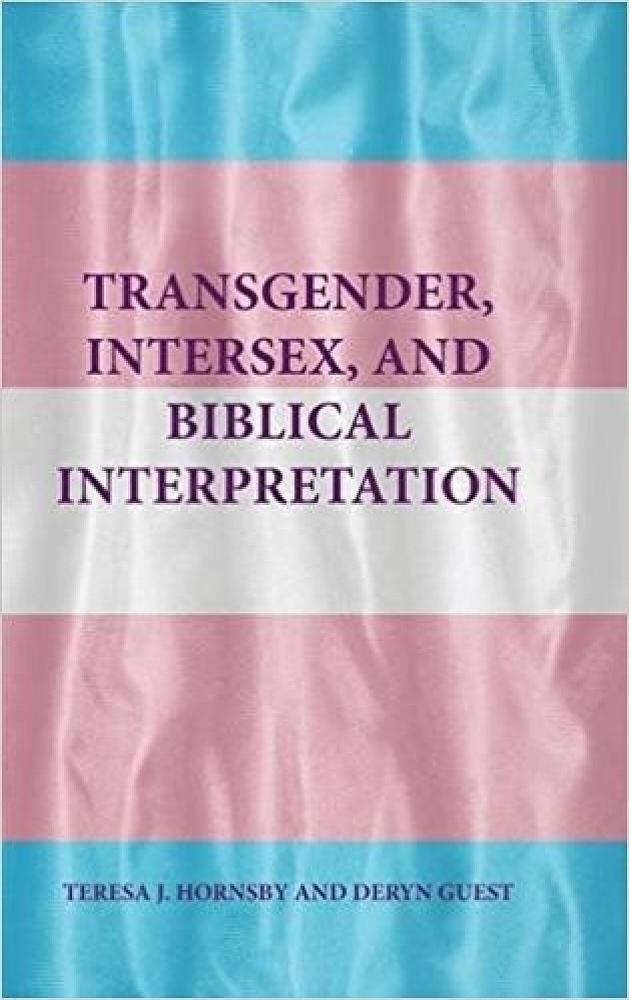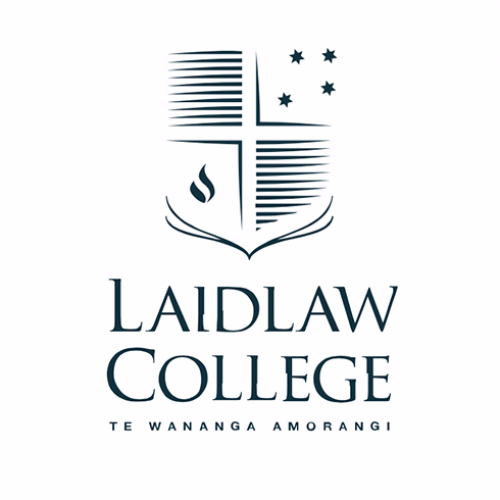
Book Review: Transgender, Intersex, and Biblical Interpretation
Edited by Teresa J. Hornsby & Deryn Guest *
The January 2017 issue of National Geographic was a special edition on gender and featured nine-year-old Avery Jackson, the first transgender person to appear on the cover of this well-known magazine. According to the discussion on their website, tens of thousands of readers responded to this image with views ranging from gratitude to outrage. Closer to home, many high schools in New Zealand are currently working out ways to respond to students who are declaring themselves "gender fluid." Boards of Trustees have had to reconsider protocols around school uniform, labelling for toilets, and all those boxes which need to be ticked on forms. For example, the school where I teach is a "single sex" school for "girls," but what would happen if Avery Jackson - who is still biologically a boy but identifies as a girl - wanted to attend?
These are just some examples of the profound discussion going on about gender in Western societies at the moment. So where is the academic field of biblical studies placed on this issue? If we staked out a rather general timeline, we might say that feminist biblical studies emerged most strongly in the 1980s, LGBT biblical studies appeared (came out?) in the 1990s, and queer biblical studies erupted onto the scene in the early 2000s. This development could be said to reflect the increasing awareness in biblical scholarship of the complex interplay between sex, gender, and sexuality when it comes to the issue of identity. But I wonder how many biblical scholars are comfortably familiar with the current state of gendered and sexual identity, and with parsing its ever-lengthening initialisms (currently LGBTTQQIAAP or LGBTQQIP2SAA)? For many, queer biblical studies belongs very much on the fringes of scholarship, while for some, feminist biblical studies is still looked on with suspicion (see Hornsby's discussion on the "oddity" of gender studies in Bible scholarship in footnote 1, page 81). This will mean that reading Hornsby and Guest's collection of essays, which applies "the trans gaze to biblical texts" (79), could be a challenge for some. Guest states:
I want to expand the project of biblical hermeneutics and call for a more interdisciplinary approach to interpreting biblical texts where trans discourses are engaged, alongside queer and feminist discourses. This would enrich our discipline and, one hopes, make it more accountable to the people for whom the Bible continues to be used as an instrument of oppression (78).
In the Introduction to their book, and in a brief essay which follows on gender, Hornsby discusses the nature of this oppression, alerting us to the appalling statistics regarding physical assault, unemployment, harassment, and suicide which reveal the high rates of discrimination and violence that trans people experience. This is attributed to the way society is founded upon heteronormativity, "the dominant belief system that relies on fixed and binary genders and the certainty that heterosexuality is the norm that occurs naturally, that is, apart from cultural influences" (2). In this system, biblical translation and interpretation have been "the buttress of the whole façade" (4). Hornsby and Guest want to show that instead, biblical scholarship can move us toward social justice and can "provide a counterdiscourse to those who use the Bible to denounce transgender or transsexual persons" (80).
To this end, Hornsby and Guest each offer two essays which present "a Scripture-based rebellion again the two-gender lie" (19). Guest begins by exploring the opening verses of Genesis, noting the binary structure of the created world as it emerges from a "primordial fluidity" which lacks boundaries (23). She suggests that trans people do not fit into the ordered world of Genesis 1, but if we investigate the concepts of t'hôm, and tohû wävohû through a strategy of "reading backwards" in light of Margrit Shildrick's work on the "monstrous" (2002), we discover not only that "the monstrous is part of creation" (43), but also that we can find "the divine right at the heart of the Other" (44). Guest's second essay is a personal reflection on the images of masculinity found in her family's Children's Bible in Colour (1964). Describing herself as a "queer child," she says, "As unlikely as it seems, an illustrated Bible was probably my first encounter with subverting gender alignments, providing a way of occupying the gender that instinctively felt right" (46). After outlining a proposed model for a transgender hermeneutic, Guest explores the masculinity embodied by her favourite childhood hero, Jehu (2 Kings 9-10). She concludes by noting that, "Although the adult Deryn rears back from Jehu's repulsive masculinity, the opportunity to follow up on that early alignment and work out a model of trans engagement with a biblical text has been informative and challenging" (79).
Hornsby's first essay is a revision of a chapter from an earlier work (2014) and explores "the idea of using 'dance' as a heuristic model for gender variability and transition" (86). She considers David's dance in 2 Sam 6, Jesus' parable about children summoning people to dance (Luke 7), and Paul who, by contrast, "has no use for dancing bodies" because of his desire for gender stability (92). She concludes that, "in the paradigm of dancing, of dynamic movement, we let go of the unyielding categories of gender that confine us and keep us apart from Jesus's idea of the kingdom of God" (93). Hornsby's second essay looks at the construction and function of 'monsters' in society, focusing on the open-sourcing phenomenon of the supernatural character Slender Man as well as the genre of apocalyptic literature as found in the Book of Revelation. Describing Jesus as "the true trans," she explains how "all things trans lie at the heart of Christian belief: the transformation of the resurrected corpse; the transubstantiation of bread to body, of wine to blood; and of course, the transition of God to human to God" (101).
These essays are not only informative - there are useful discussions on the various definitions of gendered identity (9-10, 45-46, 51-54) - but they are creative, inspiring, and honest; the vulnerability of Guest in sharing her personal journey from "queer child" to "butch lesbian," to someone who currently has an "FTM affinity" (53) is admirable. My only query concerns the inclusion of "intersex" in the title of this book given the lack of attention given to this gendered identity, especially as it is quite distinct from a trans identity. As far as I could see, the only mention of it was a bracketed suggestion that perhaps the Ethiopian eunuch who rescues Jeremiah could be considered intersex (4). In personal correspondence, Hornsby advised me that the title had been a decision made by the publisher, not by the authors. Otherwise, I see this book as a valuable contribution to biblical scholarship, and would agree with Hornsby that, "a trans hermeneutic gets closest to what may be essential in Christianity: fluidity, dynamism, inclusivity, and transformation" (17).
Gillian Townsley is School Chaplain & Religious Studies Teacher at St Hilda's Collegiate School, and Teaching Fellow at Otago University.
